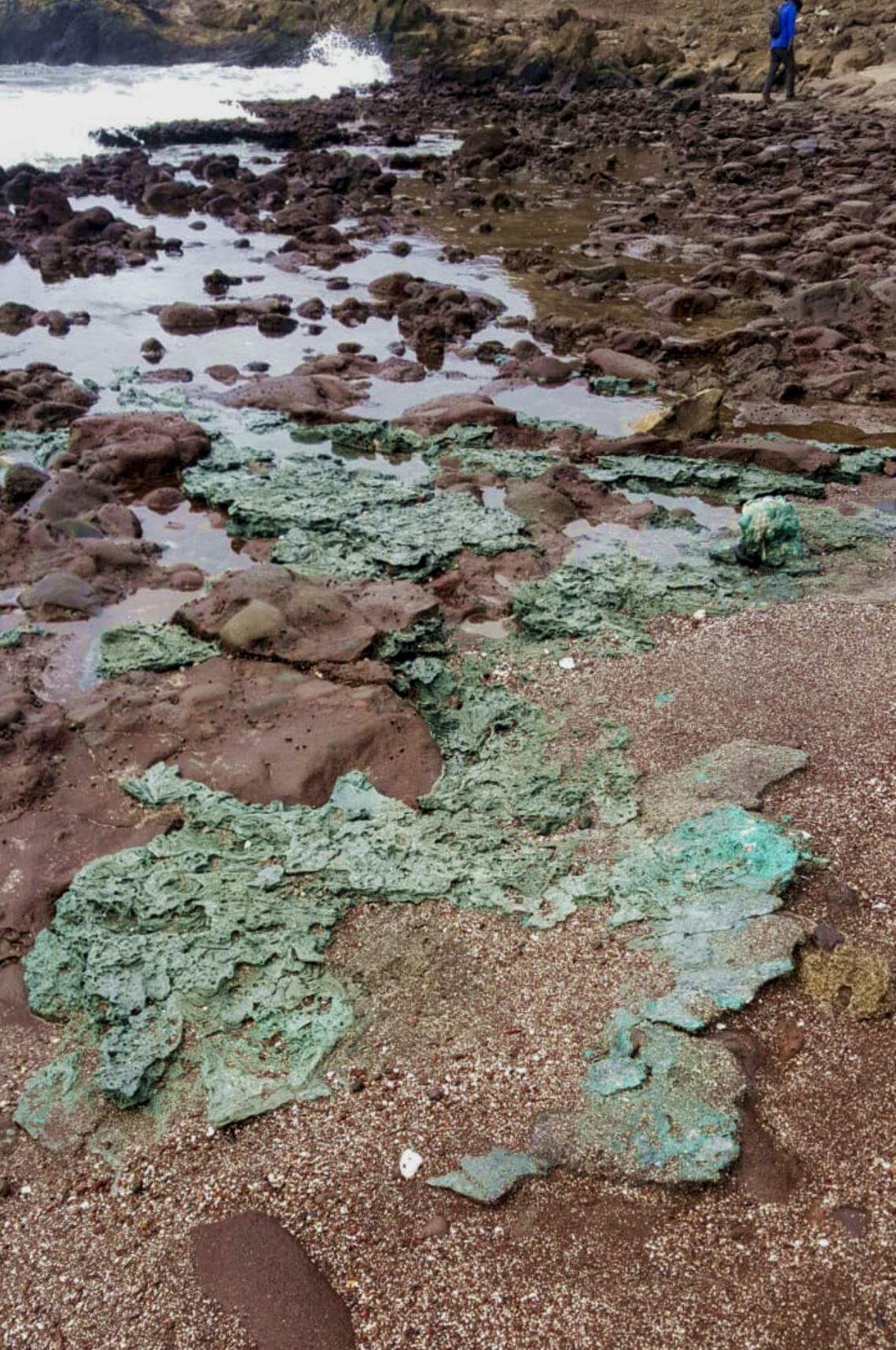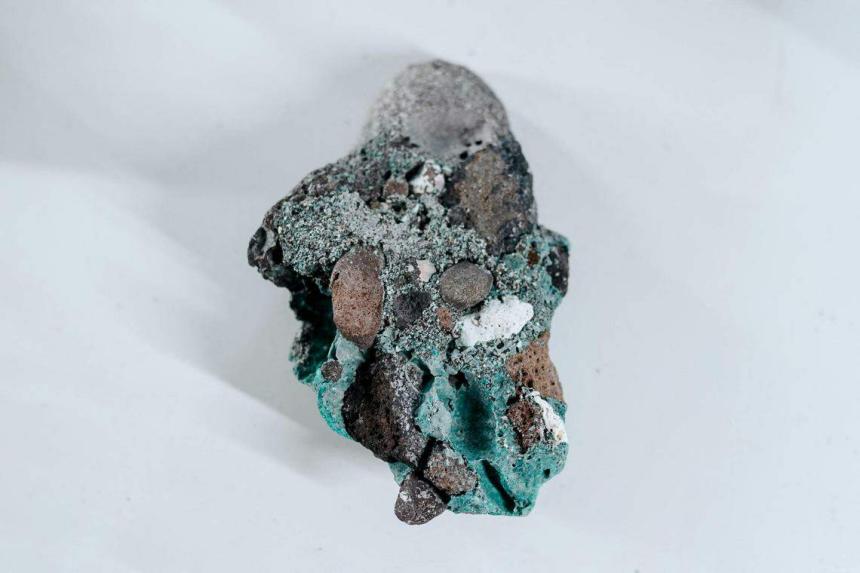In yet another testament to humanity’s devastating impact on the environment, naturally formed rocks fused with plastic debris and other pollutants have been found all over the world.
The peculiar-looking, blue-green “plastistones” are composites formed when materials such as heavy metals, organic solvents and microplastic debris are fused into, or adhere to, the surface of sedimentary rocks.
They have been found across five continents and 11 countries – the United States, Portugal, Britain, Italy, Japan, Spain, China, India, Bangladesh, Brazil and Peru.
The “disturbing” finds, even on far-flung islands, have left researchers concerned, raising questions about this development possibly marking the beginnings of the Anthropocene – a new geological age indicating when humanity began to substantially alter earth’s surface, atmosphere, oceans and systems of nutrient cycling, the effects of which will far outlast man’s existence on the planet.
“We talk so much about the Anthropocene, and this is it,” geologist Fernanda Avelar Santos told AFP. “The pollution, the garbage in the sea and the plastic dumped incorrectly in the oceans are becoming geological material... preserved in the earth’s geological records.”
Plastistones have been found on Trindade Island, a volcanic outcrop 1,140km off the coast of Brazil and accessible only via a three- to four-day boat trip.

“Marine pollution is provoking a paradigm shift for concepts of rock and sedimentary deposit formations,” wrote a team helmed by Professor Santos in a study published in September 2023 in the journal Marine Pollution Bulletin.
“Human interventions are now so pervasive that one has to question what is truly natural.”
Prof Santos, who is from the Federal University of Parana in southern Brazil, first found these plastic rocks in 2019 when she travelled to Trindade Island to research for her doctoral thesis on a completely different topic – landslides, erosion and other “geological risks”.
She was working near a protected nature reserve known as Turtle Beach, the world’s largest breeding ground for the endangered green turtle, when she came across a large outcrop of what she later found were plastistones.
Following her expedition, she took the rocks back to her lab for analysis, and found the rocks to be a new kind of geological formation.
“We concluded that human beings are now acting as a geological agent, influencing processes that were previously completely natural, like rock formation,” she said, adding that the “new and terrifying” finding left her disturbed and upset.

Her research led her to find out that similar rock-like plastic formations had previously been reported in places including Hawaii, Britain, Italy and Japan since 2014. Trindade Island is the most remote place on the planet where the formations have been found so far, she said.
She fears that as the rocks erode, they will leach microplastics into the environment and further contaminate the island’s food chain.
The main component in the rocks Prof Santos discovered was remnants of fishing nets, the team found. But ocean currents have also swept an abundance of bottles, household waste and other plastic trash from around the world to the island.
“The (nets) are dragged by the marine currents and accumulate on the beach. When the temperature rises, this plastic melts and becomes embedded with the beach’s natural material.”
Researchers Hou Deyi and Wang Liuwei from China’s Tsinghua University explored plastistones in a paper published in November 2023.
“Plastistones have been shown to alter the microbial communities of the surrounding environment and can generate significant amounts of microplastics and nanoplastics,” they said.
“This new type of sedimentary rock provides compelling evidence of how human activities can act as a powerful exogenic geological process that reshapes the geological record of our planet.”

In 2022, microplastics were detected in human blood for the first time, with results of a study indicating that human exposure to plastic particles results in absorption of the particles into the bloodstream, travelling to the organs.
Bottle-fed babies may ingest more than a million pieces of microplastics each day.
Nanoplastics are plastic particles under one micrometre in length, or one-70th the width of a human hair.
They pose a greater threat to human health than microplastics because they are small enough to penetrate human cells, enter the bloodstream and impact organs.
They can also pass through the placenta into the bodies of unborn babies.
More than 400 million tonnes of plastic waste are produced every year, with less than 10 per cent of it being recycled, according to the United Nations Environment Programme, choking landfills and despoiling oceans.
That amount is also set to surge in the coming decade as oil companies, which often also produce plastics, look to new sources of revenue amid the energy transition away from fossil fuels.
The vast majority of plastic does not degrade naturally, but breaks down into smaller pieces over time. Tiny plastic bits are also routinely shed from plastic-containing products while they are in use, including many synthetic fabrics.


